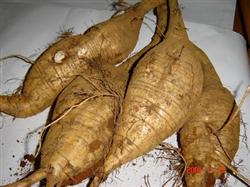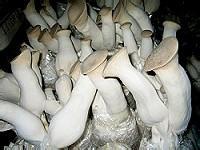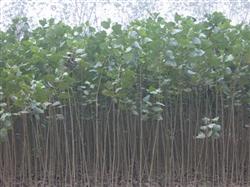Cultivation techniques of High-yield Pueraria lobata

Pueraria lobata, also known as kudzu, belongs to the legume plant kudzu. Kudzu is rich in starch, isobrass, calcium, selenium, iron, copper, phosphorus, potassium and more than ten kinds of essential trace elements for the human body, which have the functions of relieving fever, relieving fever and relieving thirst, appetizer, hemorrhoids, cancer prevention and so on. It is an emerging green health longevity food and tight-selling products for export. The whole body of kudzu root is treasure, stem bark fiber can be twisted rope, woven kudzu cloth, can also be used as raw material for papermaking, leaves are excellent green fodder, can be fed to pigs and rabbits, etc., kudzu miscellaneous can be cultivated as edible fungi, tubers are rich in starch and can be processed into health food, and kudzu wine can also be made. Kudzu flower can be made into kudzu tea with magical effect. It can inhibit a variety of diseases of postpartum women, and has breast enhancement and cosmetic effect at the same time. The experience of artificial planting is introduced as follows: due to different planting topography, one of the cultivation methods can be selected according to different topography. 1. Shelf insertion method: this method is suitable for planting in low-lying land such as wasteland, farmland, vegetable gardens in front of and behind houses. 1. Select improved varieties: give priority to stereotyped and high-yielding Pueraria lobata, supplemented by local folk cultivated species, and never save trouble by painting. It is better to plant local varieties of Pueraria lobata and crude fiber, which are effective in that year. Otherwise, it will result in low efficiency and can not be machined. 2. Raising seedlings with plastic film: (1) for the preparation of nutritious seedbed, it is better to choose sandy loam in mountain or garden where there is no harm to livestock and poultry. Heavy clayey soil is prone to stagnant water and can be mixed with some sand to improve the soil. The seedling bed is 15-20 cm high, 60-100 cm wide and unlimited in length. Apply 1.5-2.5 kg of rotten stable manure or soil manure per square meter. Turn deeply and rake flat, the seedbed is slightly raised in the middle, and the width of the ditch on both sides is 20-30 cm. (2) seeding operation: before ① planting, the seedbed should be fully moist; ② will cut the selected fine varieties of Pueraria lobata with a branch bud as a seed, cut the bud nodes to grow into segments of 6-10 cm, spread them on the whole seedbed, avoid overlap, and cover them with 2-3 mm thick fine soil, so as to reveal in principle, then sprinkle some mature stable fertilizer, and then cover with a layer of rice straw. ③ uses about 2 meters of bamboo or small bamboo strips to be arched on the seedbed, one every 35 centimeters. Cover the agricultural film, cover the nursery bed into an arch, and compact it with soil around. 3. Land selection and soil preparation: (1) Land selection: in order to obtain high yield by artificial cultivation of Pueraria lobata, good land should be selected first. First, sweet potato land can be used to replant; second, sandy soil with thick soil layer and good drainage can be selected for planting. (2) soil preparation and ridging: soil preparation began in mid-February, and 400 kg of barnyard manure, 500 kg of kitchen ash, 50 kg of calcium magnesium phosphate fertilizer or 200 kg of compound fertilizer were applied per mu before soil preparation. In soil preparation, like sweet potato ridges, the width of the ridge is 60-70 cm, and the length of the ridge is determined by the convenience of land operation. 4. Reasonable close planting: from the end of February to the middle of March. Choose a sunny day when there is no strong wind in cloudy days, and the seedling bed should be watered thoroughly before transplanting in order to raise seedlings with soil. Plant 1200-1400 plants per mu, that is, the plant spacing is 30 cm, and the row spacing depends on the topography. Remember, be sure to plant at an angle of 30 degrees. This method grows fast and is easy to dig and save labor. Before planting the seedlings, first put the seedlings on the ridge according to the distance between the plants, then dig a small hole, put the seedlings into the holes, cover 2 cm of fine soil, and compact the soil with both hands. 5. Strengthen management: (1) insert rack: when the seedling grows to 10-20 cm high, it should be inserted into the rack. The material for inserting the rack is made of bamboo sticks about 2 meters long. Diagonally intersected into rows, connected into a piece, reinforced with rope at the intersection of bamboo strips to prevent wind and human and animal damage. (2) fertilization: after seedling transplantation, diluted human and animal manure water can be used as root water. When the seedling grows to about 30 cm, you must urge the seedling twice, spray it with 0.3% 0.5% urea water, spray it once every 15 days, and then apply fertilizer appropriately. (3) remove seedlings and control diseases and insect pests: when kudzu vine grows to 1-2 meters, it should be ploughed and weeded, although kudzu root has strong resistance. However, it is inevitable that there will be some diseases and insect pests, especially in the critical season of tuber growth from June to August. In order to keep the leaves exuberant, non-residual drugs or lime powder should be used if necessary. 6. Pruning: when the kudzu vine grows to about 1.5 meters, the branches and vines must be trimmed. (1) Root pruning: cut off the topsoil of the grass. When you see the tip of the root, choose 1 or 2 stout root blocks to leave, cut the rest of the root system with a blade, and then cover the topsoil. (2) pruning branches: leave 1-2 sturdy vines per stem as the main vine, and cut off all the others. In the range of 1-1.5 meters from the root of the main vine, the lateral bud vine should also be cut off to prevent the growth of twigs. When the main vine grows to 5 meters long, cut off the top to ensure that nutrients promote root expansion. 7. Harvest and seed retention: Gegen can be harvested in the same year or in the second year, and the starch content is the highest from November to December. Pueraria lobata is mainly asexual reproduction. The section chooses sturdy and pure plant vines as seed strips for the second year, which can be used as seed strips from 1.5 meters above the stem. Second, open-air cultivation method: this method is only suitable for planting on gentle slopes of less than 30%, and the planting requirements are basically the same as the rack method, except that the rack, root and pruning are omitted, so that it can grow naturally, cover the ground, enhance drought resistance, and is beneficial to soil and water conservation. and can dig large and stay small every year, for the same piece of land, to achieve investment once, generations will benefit.
- Prev

Do a good job of raw material reserve and grasp the cultivation of Pleurotus eryngii in winter and spring
Apricot abalone mushroom (Pleurotuseryngii) is also known as snow mushroom. Pleurotus eryngii is a kind of large fleshy umbrella fungus with good quality. Pleurotus eryngii has thick seedling meat, crisp and tender texture and delicious taste, which can be called the king of Pleurotus ostreatus. Rich in nutrition, high oligosaccharide content, has the effect of bowel cosmetology. It can be suitable for keeping fresh or dried, and is very popular with consumers.
- Next

The method of raising Poplar seedlings in Summer
Before planting, we are prepared to select varieties with fast growth, high quality and high yield and strong adaptability, such as 80351, 72 poplar, 69 poplar and so on. From the end of July to the end of September, the cuttings began to breed when the cuttings were semi-lignified. Mass propagation is mainly based on the twigs and weak shoots of the same year's seedlings in the nursery. The width of the bed is 1 meter, the length is based on the number of cuttings, and the height is 20 centimeters. ...
Related
- Fuxing push coffee new agricultural production and marketing class: lack of small-scale processing plants
- Jujube rice field leisure farm deep ploughing Yilan for five years to create a space for organic food and play
- Nongyu Farm-A trial of organic papaya for brave women with advanced technology
- Four points for attention in the prevention and control of diseases and insect pests of edible fungi
- How to add nutrient solution to Edible Fungi
- Is there any good way to control edible fungus mites?
- Open Inoculation Technology of Edible Fungi
- Is there any clever way to use fertilizer for edible fungus in winter?
- What agents are used to kill the pathogens of edible fungi in the mushroom shed?
- Rapid drying of Edible Fungi

